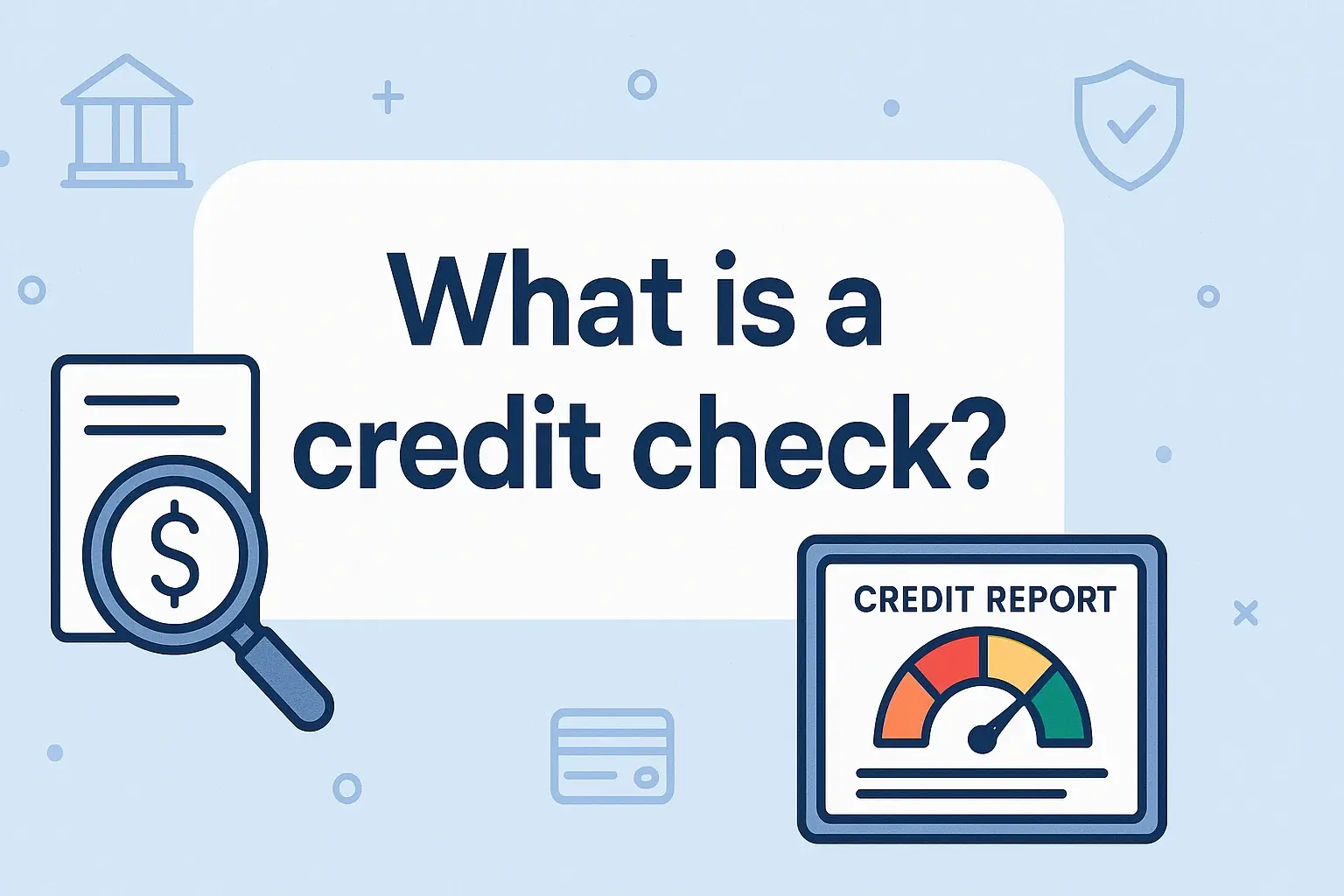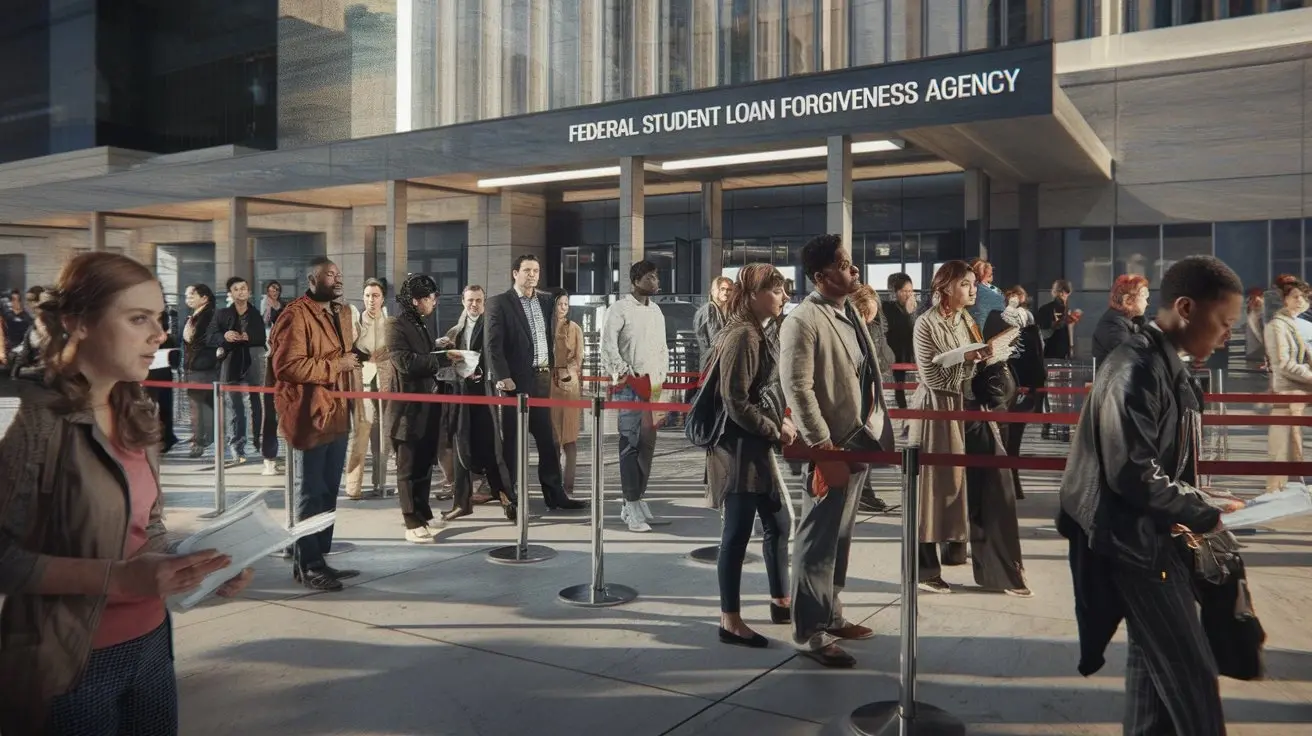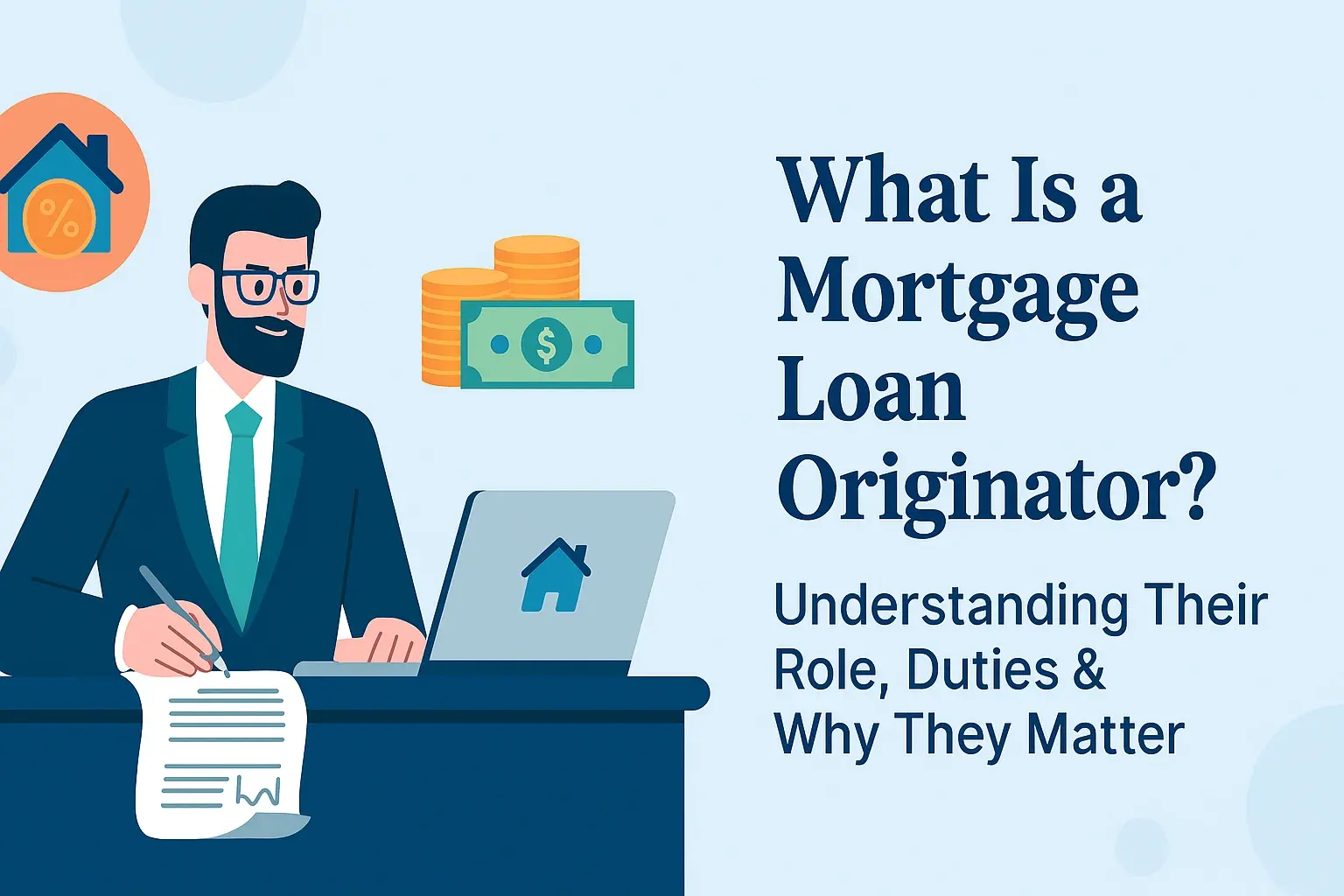-
Posted on: 27 Jan 2023

-
Understanding how long a repossession remains on your credit report is crucial for financial planning. This comprehensive guide details the exact timeframe, its impact, and strategies for recovery, empowering you to navigate post-repo credit challenges effectively.
What Exactly is a Repossession?
A repossession, often shortened to "repo," occurs when a lender takes back a financed asset, most commonly a vehicle, due to the borrower's failure to make payments as agreed upon in the loan contract. This is a drastic measure taken by lenders to recover their losses when a borrower defaults on their secured loan. The asset serves as collateral, meaning the lender has a legal claim to it if the borrower doesn't fulfill their payment obligations. While cars are the most frequent subjects of repossession, other secured assets like boats, motorcycles, or even homes (though home foreclosures have their own specific processes) can also be repossessed.
The process typically begins after a borrower misses several payments. Lenders usually send delinquency notices and attempt to contact the borrower to discuss payment arrangements. However, if these efforts fail and the borrower remains significantly behind on payments, the lender can initiate the repossession process. This is often done without prior notice to the borrower, although state laws may vary on specific notification requirements before the actual taking of the property. Once the asset is repossessed, the lender will usually sell it at an auction to recoup the outstanding loan balance. If the sale proceeds are less than the amount owed, the borrower may still be liable for the remaining balance, known as a deficiency balance.
How Long Does a Repo Stay on Your Credit Report?
The duration a repossession stays on your credit report is a critical piece of information for anyone facing or recovering from this situation. Generally, a repossession, like most negative marks on a credit report, will remain visible for a period of **seven years** from the date of the original delinquency that led to the repossession. This seven-year clock starts ticking from the date the account became seriously delinquent, not necessarily from the date the vehicle was actually repossessed. This is a standard reporting period set by federal law, specifically the Fair Credit Reporting Act (FCRA).
It's important to understand that the repossession itself is a severe negative event, and its impact on your credit score is immediate and substantial. However, the reporting period is consistent across the major credit bureaus: Equifax, Experian, and TransUnion. This means that regardless of which bureau you check, the repossession entry will follow the same seven-year guideline. While the physical presence of the repossession on your report will eventually fall off after seven years, its effects on your creditworthiness can linger much longer, influencing lenders' decisions and the interest rates you're offered.
Furthermore, the nature of the repossession can sometimes influence how it's categorized on your report. For instance, a voluntary repossession (where you hand the car back to the lender before they have to forcibly take it) might be viewed slightly differently by some lenders than an involuntary one, though both are significantly damaging. However, the seven-year reporting period remains the same for both. Understanding this timeframe is the first step in developing a strategy to manage your credit health moving forward.
When Does the Seven-Year Clock Start?
The crucial detail in determining how long a repo stays on your credit is understanding when the seven-year period begins. The Fair Credit Reporting Act (FCRA) mandates that most negative information can be reported for seven years. For a repossession, this period typically starts from the date of the first missed payment that ultimately led to the delinquency and subsequent repossession. This is often referred to as the "date of first delinquency" or "DOFD."
Let's illustrate with an example. Suppose you have a car loan and miss your payment in January 2025. You continue to miss payments in February and March. In April 2025, the lender repossesses your vehicle. The seven-year clock for the repossession entry on your credit report would likely start from the date of the January 2025 missed payment, not from the April 2025 repossession date. Therefore, this repossession would typically fall off your credit report around January 2032.
It's vital to differentiate this from the date the repossession event itself occurred. While the repossession date is a key detail of the event, the FCRA's reporting period is tied to the initial delinquency. This distinction is important because it means the negative impact of the repossession can be present on your credit report for longer than just the time elapsed since the vehicle was taken back. Always check your credit reports from all three major bureaus to confirm the dates associated with any derogatory marks.
Does Settling the Deficiency Change the Repo Duration?
A common misconception is that settling the deficiency balance after a repossession will somehow shorten the time the repo stays on your credit report. This is generally not the case. As mentioned, the seven-year reporting period is tied to the original delinquency date. Settling the deficiency, while a responsible financial action that can prevent further legal action and collection efforts, does not erase the original negative mark or reset the clock for its removal from your credit report.
When you settle a deficiency balance, the credit report will be updated to reflect that the debt has been settled or paid. This is a positive update in the sense that it shows you've taken steps to resolve the outstanding obligation. However, the original delinquency and the repossession event will still be reported for the full seven-year period. The entry might be updated to show a "paid" or "settled" status, which is better than an unpaid balance, but the negative history remains.
For example, if your car was repossessed in April 2025 due to a delinquency that started in January 2025, and you settle the deficiency in June 2025, the repossession will still remain on your credit report until approximately January 2032. The updated status of "settled" might slightly mitigate the negative impact compared to an unpaid deficiency, but the fundamental seven-year reporting period remains unchanged.
The Immediate and Long-Term Impact of a Repo on Your Credit Score
A repossession is one of the most damaging events that can occur on a credit report. Its impact on your credit score is immediate and significant, and the long-term consequences can affect your ability to obtain credit for years to come. Understanding this impact is crucial for managing expectations and developing effective credit rebuilding strategies.
Immediate Credit Score Drop
The moment a repossession is reported to the credit bureaus, your credit score can plummet. The exact drop varies depending on your credit score before the repossession, the presence of other negative marks, and the scoring model used. However, it's not uncommon for a repo to cause a drop of 50 to 150 points or even more. This is because a repossession signifies a severe breakdown in financial responsibility and a high risk of future default in the eyes of lenders.
Several factors contribute to this drastic score reduction:
- Severity of the Derogatory Mark: Repossessions are categorized as severe negative events, carrying significant weight in credit scoring algorithms.
- Payment History: The missed payments that led to the repossession are already damaging your score. The repo itself is the culmination of this negative payment history.
- Credit Utilization: While not directly related to the repo itself, if you have other debts, the stress of a repo might lead to increased utilization on other credit lines, further impacting your score.
- New Credit Applications: If you've recently applied for credit before the repo hits your report, those inquiries might be compounded by the new negative information.
For someone with an excellent credit score (e.g., 780+), a repo could drop their score into the good or fair range. For someone with an already average score, it could push them into the poor credit category.
Long-Term Consequences of a Repo
Beyond the immediate score drop, a repossession has significant long-term implications for your financial life:
- Difficulty Obtaining New Credit: Lenders view individuals with a recent repossession as high-risk borrowers. This makes it challenging to get approved for new loans, credit cards, or mortgages. When you do get approved, you'll likely face higher interest rates and stricter terms.
- Higher Insurance Premiums: In many states, car insurance companies use credit-based insurance scores. A repossession can negatively impact this score, leading to higher auto insurance premiums.
- Challenges with Renting: Landlords often check credit reports as part of the tenant screening process. A repossession can make it difficult to rent an apartment or house, as landlords may see you as a higher risk for not paying rent.
- Employment Issues: Some employers, particularly those in financial services or positions of trust, may conduct credit checks as part of their background screening process. A repossession could potentially impact job opportunities.
- Impact on Future Loans: Even after the repo falls off your credit report, its memory might persist in lenders' internal records or influence their assessment of your overall financial reliability.
The longer the repossession remains on your report, the more it will negatively influence these aspects of your financial life. However, as it ages and other positive credit behaviors accumulate, its influence tends to diminish.
Credit Score Recovery Timeline After a Repo
Rebuilding your credit score after a repossession is a marathon, not a sprint. The recovery timeline depends heavily on how you manage your credit moving forward.
- Immediate Aftermath (0-1 year): Your score will be at its lowest. Lenders will be hesitant. Focus on establishing a pattern of responsible financial behavior.
- Early Recovery (1-3 years): With consistent on-time payments on any new credit you can obtain, your score will begin to climb. The negative impact of the repo starts to lessen slightly as newer, positive information is added.
- Mid-Term Recovery (3-7 years): As the repossession ages, its negative impact continues to diminish. Your score will likely improve significantly if you've maintained good credit habits. You may find it easier to qualify for better loan terms.
- Post-Removal (7+ years): Once the repossession is removed from your credit report, its direct negative influence ceases. Your score will reflect your current credit behavior and the absence of this specific mark.
It's crucial to remember that while the repossession will eventually disappear from your report, the underlying financial habits that led to it must be addressed. Consistent, positive credit behavior is the most effective way to recover and build a strong credit profile.
What Information Appears on Your Credit Report After a Repo?
When a repossession is recorded on your credit report, it's not just a simple notation of "car taken back." The credit bureaus will include specific details that paint a picture of the event and its financial implications. Understanding these details is key to verifying accuracy and assessing the full impact.
Key Details in the Repo Entry
A typical repossession entry on your credit report will include:
- Account Status: It will clearly indicate that the account was repossessed. Terms like "Repossession," "Vehicle Repossessed," or similar language will be used.
- Date of Repossession: The date the lender took back the vehicle.
- Date of First Delinquency (DOFD): As discussed, this is crucial as it starts the seven-year reporting clock.
- Original Creditor and Loan Information: The name of the lender and details about the original loan, including the loan amount and account number.
- Balance Information: This can be complex. It might show the balance at the time of repossession, the amount recovered from the sale of the vehicle, and importantly, the remaining deficiency balance if one exists.
- Payment History: The payment history leading up to the repossession will be reflected, showing missed payments and late payments.
- Collection Activity: If the deficiency balance was sent to a collection agency, this will also be noted, potentially as a separate entry or linked to the original account.
The presence of a deficiency balance is particularly damaging. It signifies that the sale of the repossessed asset did not cover the full amount owed, and you still owe the lender money. This remaining debt can be pursued by the lender or a collection agency, and it will continue to appear on your credit report, often with updated status information.
Reporting of Deficiency Balances
The deficiency balance is a critical component of a repossession's impact. If the sale of the repossessed vehicle doesn't cover the outstanding loan balance, the costs associated with the repossession (towing, storage, auction fees), and any other fees allowed by the loan agreement and state law, the remaining amount is the deficiency balance. This deficiency is still your debt.
Here's how it's typically reported:
- Original Loan Account: The original auto loan account will show the repossession and the resulting balance. It might be updated to reflect a "paid" or "settled" status if you pay off the deficiency, or it might remain open with a balance if you don't.
- Collection Account: If the deficiency is sold to a collection agency, a new account will appear on your credit report, listing the collection agency as the creditor. This collection account will also have its own reporting period, usually seven years from the date of delinquency on the original debt.
A deficiency balance is a strong negative indicator to lenders. It suggests you were unable to afford the vehicle and still owe money on it. This makes it much harder to secure new credit and can lead to aggressive collection efforts.
Voluntary vs. Involuntary Repossession Reporting
The distinction between a voluntary and involuntary repossession can sometimes influence how a lender perceives the situation, but the reporting on your credit report is largely the same in terms of its negative impact and duration.
- Involuntary Repossession: This is when the lender or their agent forcibly takes back the vehicle because you failed to make payments. This is the more common scenario.
- Voluntary Repossession: This occurs when you, the borrower, decide to return the vehicle to the lender to avoid the potentially more aggressive process of involuntary repossession and associated fees. You might do this if you know you can no longer afford the payments and want to mitigate further damage.
On a credit report, both will be clearly marked as a repossession. Some argue that a voluntary repossession might be viewed slightly less negatively by future lenders because it demonstrates an attempt to proactively manage the situation. However, for credit scoring purposes and the seven-year reporting period, both are treated as severe negative events. The FCRA does not differentiate between them in terms of reporting duration.
Regardless of how it happened, the key takeaway is that a repossession, voluntary or not, will significantly damage your credit score and remain on your report for seven years from the date of the original delinquency.
Factors Affecting How Long a Repo Stays on Your Credit
While the standard reporting period for a repossession is seven years from the date of first delinquency, there are nuances and specific situations that can influence how it appears or is handled on your credit report. Understanding these factors can help you better manage your credit and ensure accurate reporting.
The "Stale" Debt Rule and Removal
The primary factor determining how long a repo stays on your credit is the "staleness" rule dictated by the FCRA. As previously emphasized, this is generally seven years from the date of first delinquency. After this period, the credit bureaus are legally required to remove the item from your report. This removal is not automatic; you typically need to request it or ensure the credit bureaus have updated their systems.
It's crucial to monitor your credit reports regularly. If a repossession entry remains on your report beyond the seven-year mark, you have the right to dispute it with the credit bureaus. You would provide evidence of the date of first delinquency and show that the seven-year period has passed. The credit bureaus then have a legal obligation to investigate and remove the inaccurate information.
The "staleness" rule applies to most negative information, including late payments, collections, bankruptcies (Chapter 7 typically for 10 years, Chapter 13 for 7 years), and repossessions. The key is the reporting period set by the FCRA, which aims to give consumers a chance to rebuild their credit after a significant period of negative history.
Errors and Disputes on Credit Reports
Mistakes can and do happen on credit reports. If you find an error related to your repossession, such as an incorrect date, an incorrect balance, or the repossession appearing after the seven-year mark, you have the right to dispute it with the credit bureaus (Equifax, Experian, TransUnion) and the furnisher of the information (the original lender or collection agency). This is a critical step in managing your credit.
The dispute process involves:
- Identifying the Error: Carefully review your credit report for any inaccuracies related to the repossession.
- Gathering Evidence: Collect any documents that support your claim, such as loan statements, payment records, correspondence with the lender, or proof of the date of first delinquency.
- Filing a Dispute: Submit a written dispute to the credit bureau(s) and potentially the furnisher of the information. You can do this online, by mail, or by phone.
- Investigation: The credit bureaus are required to investigate your dispute within a reasonable timeframe (usually 30 days, extendable to 45 days). They will contact the furnisher of the information to verify its accuracy.
- Resolution: If the information is found to be inaccurate or unverifiable, it must be corrected or removed from your credit report.
A successful dispute can lead to the early removal of an inaccurate repossession entry or correction of its details, which can significantly improve your credit score and financial outlook. However, disputing a legitimately reported repossession that is within its seven-year reporting period will not result in its removal.
Impact of Collection Agency Reporting
If the deficiency balance from your repossession is sent to a collection agency, this can complicate the reporting on your credit file. A collection account is a separate negative mark on your credit report.
Here's how it works:
- Separate Entry: The collection agency will typically create a new account entry on your credit report, listing them as the creditor and showing the amount you owe.
- Reporting Period: The FCRA generally allows collection accounts to be reported for seven years from the date of delinquency on the original debt. This means the collection account will likely run concurrently with the original repossession entry.
- Potential for Re-aging: Be cautious of collection agencies that might try to "re-age" the debt, which is illegal. The seven-year clock for reporting starts from the original delinquency.
- Impact on Score: A collection account is a significant negative mark, further damaging your credit score. It signals to lenders that you have an outstanding, unpaid debt.
Resolving the deficiency balance with the collection agency, even if you can only settle for a portion, is generally advisable. Getting a "paid" or "settled" notation on the collection account is better than an unpaid one. However, as with the original repossession, settling the debt does not remove the entry from your report until the seven-year period has passed.
Repo vs. Other Derogatory Marks: A Comparative Look
A repossession is a severe derogatory mark, but it's not the only one that can appear on a credit report. Understanding how it compares to other negative items can provide context for its impact and the urgency of addressing it.
Repo vs. Late Payments
Late Payments: These are marks for payments made 30, 60, or 90+ days past their due date. The impact increases with the severity of the lateness (90+ days is worse than 30 days). Late payments can remain on your report for seven years from the date of delinquency.
Repossession: A repossession is the ultimate consequence of severe late payments on a secured loan. It signifies a complete default. While both are negative and have a seven-year reporting period, a repossession carries a much heavier negative weight on your credit score than isolated late payments.
Comparison: A single 30-day late payment might lower your score by 30-60 points. A repossession can drop it by 50-150 points or more. Multiple late payments on various accounts can also significantly damage your score, but a repossession is often considered one of the most damaging single events.
Repo vs. Collections
Collections: A collection account appears when a debt is turned over to a third-party collection agency because it has gone unpaid. This can be for any type of debt (credit card, medical bill, personal loan, etc.). Collections also typically stay on your report for seven years from the date of delinquency on the original debt.
Repossession: As discussed, a repossession itself is a severe event. If a deficiency balance results, it can then be sent to collections. So, you might have both the repossession entry and a separate collection account entry on your report.
Comparison: Both a repossession and a collection account are very damaging. A repossession is tied to a specific secured asset and signifies a major default. A collection account signifies an unpaid debt that has been escalated. If the deficiency from a repo leads to a collection, it's a double whammy. However, the repossession itself is a direct indicator of inability to manage secured debt, which is often viewed as particularly risky by lenders.
Repo vs. Bankruptcy
Bankruptcy: A Chapter 7 bankruptcy remains on your credit report for 10 years from the filing date. A Chapter 13 bankruptcy remains for 7 years from the filing date. Bankruptcies are severe derogatory marks that indicate a more widespread financial insolvency.
Repossession: A repossession is a specific event related to a single secured loan. It remains on your report for seven years from the date of delinquency.
Comparison: A Chapter 7 bankruptcy has a longer reporting period (10 years) and is generally considered more damaging than a repossession because it indicates a complete financial fresh start. However, a repossession is still a very serious negative event. Lenders may view a recent repossession as a higher risk for future defaults on similar secured loans, while a bankruptcy might suggest a broader inability to manage any debt.
Repo vs. Foreclosure
Foreclosure: Similar to a vehicle repossession, foreclosure is the lender taking back a property due to non-payment of the mortgage. A foreclosure typically remains on your credit report for seven years from the date of the original delinquency.
Repossession: A vehicle repossession also stays for seven years from the date of delinquency.
Comparison: Both are severe events related to secured loans and have the same standard reporting period. The financial implications of a foreclosure are often much larger due to the value of real estate, but the impact on credit reporting and the duration are comparable. Both signal a significant failure to meet financial obligations.
Strategies to Mitigate the Impact of a Repo
While a repossession is a serious blow to your credit, there are proactive steps you can take to mitigate its negative impact and begin the recovery process. These strategies focus on managing your existing credit, obtaining new credit responsibly, and ensuring accurate reporting.
Thoroughly Review Your Credit Reports
The first and most critical step is to obtain copies of your credit reports from all three major bureaus: Equifax, Experian, and TransUnion. You are entitled to a free report from each bureau annually via AnnualCreditReport.com. Carefully examine the repossession entry for any inaccuracies.
Look for:
- Incorrect Dates: Ensure the date of first delinquency and the repossession date are accurate.
- Incorrect Balances: Verify the outstanding balance and any reported deficiency balance.
- Unresolved Debts: If the deficiency was sent to collections, ensure the collection account is accurately reported.
- Duplicate Entries: Make sure there aren't multiple entries for the same repossession.
If you find any errors, dispute them immediately with the credit bureaus and the furnisher of the information. Correcting errors can lead to the removal of inaccurate negative information, which can significantly boost your score.
Address the Deficiency Balance
If you owe a deficiency balance after the repossession, it's crucial to address it. While paying it off won't remove the repossession from your report, it will change the status of the debt to "paid" or "settled," which is viewed more favorably by lenders than an unpaid balance. An unpaid deficiency can lead to further collection efforts, legal judgments, and wage garnishment, all of which are also reported on your credit.
Consider these options:
- Negotiate a Settlement: Contact the lender or collection agency and try to negotiate a lump-sum settlement for a reduced amount. Even paying a percentage of the debt is better than leaving it unpaid.
- Payment Plan: If you can't afford a lump sum, propose a reasonable monthly payment plan.
- Get it in Writing: Always get any settlement or payment agreement in writing before making payments. Ensure the agreement specifies that the debt will be reported as "paid" or "settled" upon completion.
Paying off a deficiency, even if settled for less than the full amount, demonstrates responsibility and can help mitigate further damage.
Demonstrate Consistent Positive Credit Behavior
The most effective way to counteract the negative impact of a repossession is to build a strong history of positive credit behavior. This involves making all future payments on time, every time, and managing credit responsibly.
Strategies include:
- Pay All Bills On Time: This is the single most important factor in credit scoring. Prioritize on-time payments for all your obligations, including rent, utilities (if reported), and any new credit accounts.
- Keep Credit Utilization Low: If you get new credit cards, aim to keep your balances below 30% of your credit limit, and ideally below 10%.
- Avoid New Credit Applications (Initially): While you'll need to rebuild, avoid applying for too much new credit at once, as multiple inquiries can temporarily lower your score.
- Build a Positive Payment History: Focus on creating a consistent track record of responsible financial management.
Over time, positive information will begin to outweigh the negative information on your credit report.
Consider Secured Credit Cards
Secured credit cards are an excellent tool for rebuilding credit after a repossession. They require a cash deposit that typically equals your credit limit. This deposit reduces the lender's risk, making them more accessible to individuals with damaged credit.
How they help:
- Build Payment History: Use the card for small, manageable purchases and pay the balance in full and on time each month. This builds a positive payment history.
- Improve Credit Utilization: While the limit might be low, keeping utilization low on these cards is important.
- Report to Bureaus: Reputable secured credit card issuers report your payment activity to the major credit bureaus, contributing to your credit history.
After a period of responsible use (usually 6-12 months), some issuers may convert your secured card to an unsecured one and refund your deposit.
Become an Authorized User
If you have a trusted friend or family member with excellent credit, you could ask them to add you as an authorized user on one of their credit cards. As an authorized user, you get a card with your name on it, and the account activity appears on your credit report. If the primary cardholder has a long history of on-time payments and low utilization, this can positively influence your credit score.
Important considerations:
- Primary Cardholder's Behavior: This strategy only works if the primary cardholder has impeccable credit habits. Their negative behavior will also reflect on your report.
- Credit Bureau Reporting: Ensure the primary cardholder's issuer reports authorized user activity to the credit bureaus.
- No Legal Obligation: As an authorized user, you are not legally obligated to pay the debt, but the primary cardholder is responsible for all account activity.
This can be a quick way to add positive history to your report, but it relies heavily on the primary cardholder's financial discipline.
Rebuilding Your Credit After a Repossession
Rebuilding credit after a repossession is a journey that requires patience, discipline, and a strategic approach. The goal is to systematically add positive information to your credit report and demonstrate to lenders that you are a reliable borrower. Here's a step-by-step guide to help you navigate this process.
Step 1: Obtain and Review Your Credit Reports
As mentioned earlier, this is the foundational step. Get your free reports from Equifax, Experian, and TransUnion. Scrutinize them for the repossession entry and any other negative or inaccurate information. Dispute any errors immediately. Understanding the exact status of your credit report is essential before making any significant financial decisions.
Step 2: Address Outstanding Debts and Collections
If you have an outstanding deficiency balance from the repossession, or any other debts in collections, prioritize addressing them. Negotiate a settlement or set up a payment plan. Getting these accounts marked as "paid" or "settled" will improve your credit profile, even though the negative history will remain for the reporting period.
Step 3: Secure New Credit Responsibly
You'll need to establish new, positive credit accounts. Start with options designed for individuals with damaged credit:
- Secured Credit Cards: As discussed, these are excellent for building a positive payment history. Use them for small purchases and pay them off in full every month.
- Credit-Builder Loans: These are small loans where the borrowed amount is held in a savings account by the lender and released to you after you've made all the payments. The payments are reported to the credit bureaus.
- Secured Loans: If you need a larger loan (e.g., for a car), consider a secured loan using another asset as collateral. This is less risky for the lender.
When applying for new credit, be selective. Too many applications in a short period can hurt your score.
Step 4: Maintain Low Credit Utilization
Credit utilization (the amount of credit you're using compared to your total available credit) is a significant factor in credit scoring. After a repossession, it's vital to keep your utilization low on any new credit accounts.
Aim for:
- Below 30%: Keep balances below 30% of your credit limit.
- Below 10% (Ideal): For the best impact on your score, try to keep balances below 10% of your limit.
This means if you have a credit card with a $500 limit, try to keep your balance below $150, and ideally below $50.
Step 5: Make All Payments On Time, Every Time
Payment history is the most critical component of your credit score. After a repossession, your payment history is likely marred by missed payments. The only way to repair this is by establishing a consistent record of on-time payments on all your accounts moving forward. Set up automatic payments or reminders to ensure you never miss a due date.
Step 6: Monitor Your Credit Regularly
Continue to check your credit reports periodically (at least annually, or more frequently if you're actively rebuilding). This allows you to track your progress, identify any new errors, and ensure that accurate positive information is being reported.
Step 7: Be Patient and Persistent
Rebuilding credit takes time. The negative impact of a repossession will gradually fade as it ages and as you consistently demonstrate responsible financial behavior. Don't get discouraged by slow progress. Focus on maintaining good habits, and your credit score will improve over time.
Preventing Future Repossessions
The best way to deal with a repossession is to avoid one altogether. If you've experienced one, it's a clear signal that your current financial situation needs adjustment to prevent a recurrence. Proactive measures are key.
Create and Stick to a Realistic Budget
A detailed budget is your roadmap to financial health. Track all your income and expenses meticulously. Identify areas where you can cut back to free up funds for loan payments. Prioritize essential expenses and loan obligations.
Key budgeting tips:
- Track Every Dollar: Use budgeting apps, spreadsheets, or a notebook to record all spending.
- Categorize Expenses: Differentiate between needs (housing, food, utilities) and wants (entertainment, dining out).
- Allocate Funds for Loans: Ensure your loan payments are a non-negotiable line item in your budget.
- Build an Emergency Fund: Aim to save 3-6 months of living expenses. This fund can cover unexpected costs without derailing your loan payments.
Communicate with Your Lenders Early and Often
If you anticipate difficulty making a payment, do not wait until you've missed it. Contact your lender immediately. Explain your situation and explore potential options:
- Payment Deferral: Some lenders may allow you to defer a payment to a later date, often at the end of the loan term.
- Modified Payment Plan: They might offer a temporary adjustment to your payment schedule.
- Loan Modification: In some cases, especially with mortgages, a more permanent modification might be possible.
Lenders are often more willing to work with borrowers who communicate proactively before a default occurs.
Re-evaluate Loan Obligations and Affordability
Sometimes, the issue isn't just a temporary setback but a fundamental problem with the loan itself being unaffordable. If you're struggling to make payments on a secured loan, it might be time to consider:
- Refinancing: Explore refinancing the loan to a lower interest rate or a longer term to reduce monthly payments. Be cautious of extending terms too long, as you may pay more interest overall.
- Selling the Asset: If you can sell the vehicle for enough to pay off the loan, or at least significantly reduce the balance, this can prevent repossession and future debt.
- Downsizing: If you have multiple vehicles or high-cost loans, consider if you can downsize to more affordable options.
Explore Debt Counseling Services
Non-profit credit counseling agencies can provide invaluable assistance. They offer:
- Budgeting Advice: Help in creating and managing a realistic budget.
- Debt Management Plans (DMPs): Consolidate your debts into a single monthly payment, often with reduced interest rates.
- Financial Education: Guidance on managing money and credit effectively.
Look for agencies accredited by organizations like the National Foundation for Credit Counseling (NFCC) or the Financial Counseling Association of America (FCAA).
Build and Maintain an Emergency Fund
An emergency fund is your financial safety net. It can cover unexpected expenses like medical bills, job loss, or car repairs without forcing you to miss loan payments or take on high-interest debt. Prioritize building this fund, even if it means making smaller sacrifices elsewhere.
Your Legal Rights Regarding Repossession
While lenders have the right to repossess a vehicle when a loan is in default, borrowers still have specific legal rights throughout the process. Understanding these rights can help ensure the repossession is conducted legally and fairly.
Notice Requirements Before Repossession
State laws vary significantly regarding pre-repossession notices. In many states, lenders are not required to provide formal written notice before they can take back the vehicle, especially if the loan agreement allows for immediate repossession upon default. However, some states may require specific notification periods or that the lender make reasonable attempts to contact the borrower.
It is crucial to consult your specific loan agreement and your state's laws. Your loan contract will outline the conditions under which repossession can occur. Always check for any clauses that might grant you additional notice rights.
The Right to Peaceful Repossession
Lenders or their agents have the right to repossess the collateral, but they must do so without breaching the peace. This means they cannot:
- Use Violence or Threats: They cannot use force, threats, or intimidation to take the vehicle.
- Enter Your Home or Garage: They generally cannot break into your home, garage, or other locked enclosures to retrieve the vehicle. If the vehicle is locked in a private garage, they may need a court order to access it.
- Damage Property: They cannot cause unnecessary damage to your property during the repossession.
If a repossession is conducted in a way that violates these principles, you may have legal recourse.
The Right to Cure the Default (In Some States)
In some states, you may have a "right to cure" the default before the repossession occurs. This means you have a specific period (often 10-15 days after receiving a notice of default) to pay all past-due amounts, including late fees and repossession costs incurred up to that point, to stop the repossession. This right is not universal and depends heavily on state law and the terms of your loan agreement.
Notice of Sale Requirements
After repossessing the vehicle, the lender must typically sell it in a commercially reasonable manner. Before selling the vehicle, most states require the lender to provide you with a written notice of the sale. This notice should include:
- Date, Time, and Location of Sale: Information about when and where the vehicle will be sold.
- Option to Redeem: Your right to pay off the entire loan balance (including fees) before the sale to get the vehicle back.
- Option to Reinstate: In some cases, you may have the right to reinstate the loan by paying past-due amounts and fees, allowing you to keep the vehicle.
The notice period required before the sale also varies by state. Failure to provide proper notice can affect the lender's ability to collect a deficiency balance.
Right to Notice of Deficiency or Surplus
After the sale, the lender must notify you of the outcome. If the sale proceeds are less than the amount owed (including costs), you may be liable for the deficiency balance. The lender must provide you with an accounting of the sale and the calculation of the deficiency. Conversely, if the sale proceeds exceed the amount owed, you are entitled to receive the surplus amount.
Consult a Legal Professional
If you believe your rights have been violated during the repossession process, or if you have questions about your specific situation, it is highly recommended to consult with a consumer protection attorney or legal aid society in your area. They can advise you on your rights and options based on your loan agreement and state laws.
In conclusion, a repossession will remain on your credit report for seven years from the date of the original delinquency. While this period is fixed by law, its impact can be mitigated through diligent credit management and proactive financial strategies. By understanding the reporting timelines, addressing any outstanding balances, and consistently demonstrating positive credit behavior, you can effectively rebuild your creditworthiness and move past the financial challenges posed by a repossession.
Faq
How long does a repossession stay on your credit report?
A repossession can remain on your credit report for up to seven years from the date of the first missed payment that led to the repossession. This can have a significant impact on your credit score during that time.
Will a repossession always stay on my credit for seven years?
Yes, a repossession can stay on your credit report for up to seven years. However, the impact on your score may lessen over time, especially if you continue to improve your credit habits and make timely payments on other accounts.
Can I remove a repossession from my credit report early?
If the repossession is reported incorrectly, you can dispute it with the credit bureaus. Otherwise, the repossession will typically remain on your credit for the full seven years unless it’s removed due to an error.
How does a repossession affect my credit score?
A repossession can significantly lower your credit score and may make it more difficult to obtain new credit or loans at favorable terms. The impact can be severe, especially in the first few years, but it may lessen over time.
What should I do if I have a repossession on my credit report?
If you have a repossession on your report, focus on rebuilding your credit by making timely payments on other accounts, keeping your credit utilization low, and monitoring your credit report for errors. Over time, positive credit behaviors can help improve your score.










